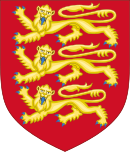
Back Anglická nemetropolitní hrabství Czech Sir an-fetropolitan Welsh Mittelinnkrahvkond Estonian Shire-kreivikunta Finnish Comté non métropolitain French Nemetropolitanske grofovije Croatian Anglia shire megyéi Hungarian Contea non metropolitana dell'Inghilterra Italian 비도시주 Korean Anglijas nemetropoles grāfistes Latvian/Lettish
| Non-metropolitan county | |
|---|---|
| |
 Non-metropolitan counties | |
| Category | Counties |
| Location | England |
| Found in | Regions Combined authority areas |
| Created by | Local Government Act 1972 |
| Created |
|
| Number | 78 (as of 1 April 2023) |
| Possible types |
|
| Possible status | |
| Populations | 300,000–1.4 million |
| Subdivisions | |
| This article is part of a series within the Politics of the United Kingdom on the |
 |
|---|
A non-metropolitan county, or colloquially, shire county, is a subdivision of England used for local government.[1]
The non-metropolitan counties were originally created in 1974 as part of a reform of local government in England and Wales, and were the top tier of a two-tier system of counties and districts. 21 non-metropolitan counties still use a two-tier system; 56 are unitary authorities, in which the functions of a county and district council have been combined in a single body. Berkshire has a unique structure.
Non-metropolitan counties cover the majority of England with the exception of Greater London, the Isles of Scilly, and the six metropolitan counties: Greater Manchester, Merseyside, South Yorkshire, Tyne and Wear, West Midlands and West Yorkshire.
The non-metropolitan counties are all part of ceremonial counties. Some ceremonial counties, such as Norfolk, contain a single non-metropolitan county, but many contain more than one and it is also common for ceremonial counties and non-metropolitan counties to share a name. Lancashire, for example, contains the non-metropolitan counties of Lancashire, Blackpool, and Blackburn with Darwen.
Cite error: There are <ref group=lower-alpha> tags or {{efn}} templates on this page, but the references will not show without a {{reflist|group=lower-alpha}} template or {{notelist}} template (see the help page).
- ^ "A Beginners Guide to UK Geography (2023)". Open Geography Portal. Office for National Statistics. 24 August 2023. Retrieved 9 December 2023.
The 25 non-metropolitan (shire) counties form the upper tier of the two-tier local government structure found in many parts of England. The lower tier of the structure is the non-metropolitan districts.